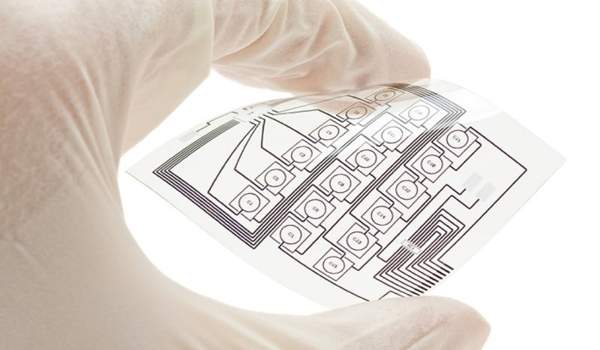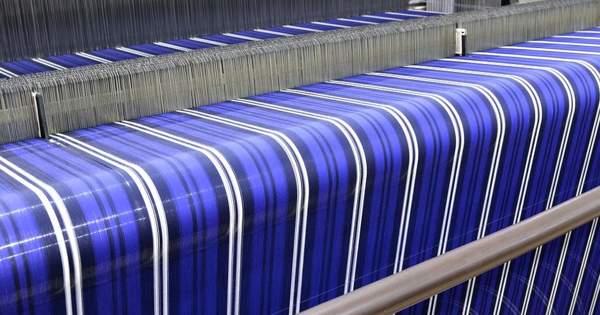Researchers demonstrated that layers of electrically conductive ink could be printed on polyester fabric to create an e-textile that could be used in the design of future wearable devices. Researchers from North Carolina State University demonstrated how to print layers of electrically conductive ink on polyester fabric to create an e-textile that could be used in the design of future wearable devices in a new study.
Researchers believe that because the printing method can be completed at room temperature and under normal atmospheric conditions, inkjet printing could offer a simpler and more effective method of producing electronic textiles, also known as e-textiles. Furthermore, the findings suggest that researchers could apply techniques used in the flexible electronic industry to textile manufacturing. Their findings were published in the journal ACS Applied Materials & Interfaces.
“Inkjet printing is a rapidly advancing new technology used in flexible electronics to make films used in cellphone displays and other devices,” said Jesse S. Jur, professor of textile engineering, chemistry, and science at NC State. “We believe that this printing method, which employs materials and processes common in both the electronics and textiles industries, has the potential to produce e-textiles for wearable devices.”
Researchers demonstrated they could print layers of electrically conductive ink on polyester fabric to make an e-textile that could be used in the design of future wearable devices.
Manchester Metropolitan University hosted the first E-Textiles Network workshop. The workshop began with an overview of what healthy aging is and how electronics and sensors can help with healthy aging. This sparked a facilitated discussion about how technology, in general, can address the challenges of healthy aging.
Researchers described how they used a FUJIFILM Dimatix inkjet printer to create a durable and flexible e-textile material, what they did to create the e-textile reliably, and its properties in the study. Part of the challenge was determining the proper material composition so that the liquid ink did not seep through the porous surface of the textile materials and lose its ability to conduct electricity.
“Printing e-textiles has been a very big challenge for the e-textile industry,” said the study’s first author, former NC State graduate student Inhwan Kim. “We wanted to build a structure layer by layer, which has never been done with inkjet printing on a textile layer. Finding the right material composition was a major challenge for us.”

They created the e-textile by sandwiching layers of electrically conductive silver ink between layers of two insulating liquid materials. Those sandwich layers were printed on top of woven polyester fabric. They used a microscope to monitor the surface of the material after printing layers of silver ink and insulating materials made of urethane-acrylate and poly(4-vinyl phenol). They discovered that the chemical properties of the insulating materials, as well as the textile yarns, were critical to the ability of the liquid silver ink to conduct electricity and prevent it from penetrating through the porous fabric.
“We wanted a robust insulation layer in the middle, but we wanted to keep it as thin as possible to keep the entire structure thin while maintaining the highest possible electric performance,” Kim explained. “Also, people will not want to wear them if they are too bulky.”
After repeatedly bending the e-textile, the researchers assessed its electrical performance. They put the e-textile through more than 100 cycles of bending and discovered it didn’t lose its electrical performance. They hope to improve the materials’ electrical performance in comparison to e-textiles created using methods that require special facilities and atmospheric conditions in future work, as well as increase the material’s breathability.
They hope to eventually use the printing method to create an e-textile that can be used in wearable electronics such as biomedical devices that can track heart rate or as a battery to store power for electronic devices.
Kim explained, “We were able to coat the ink on the fabric in a multi-layer material that is both durable and flexible.” “The beauty of this is that we did everything with an inkjet printer — no lamination or other methods were used.”













